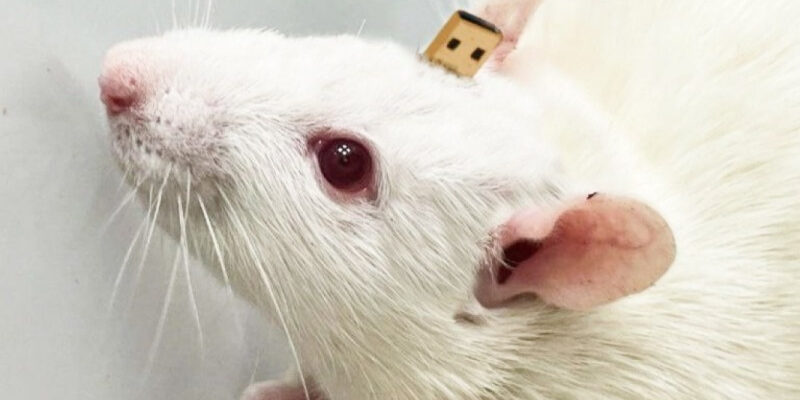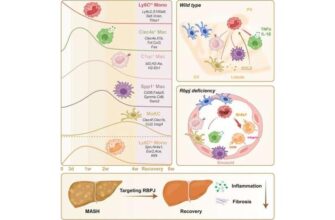Imagine a world where artificial intelligence doesn`t just process data on a screen, but actively collaborates with a living brain, offering guidance without dictating will. This seemingly futuristic scenario has quietly unfolded in a Russian laboratory, marking a significant milestone in neurotechnology.
A World-First: AI Integrates with Rodent Brains
In a pioneering effort announced by the Russian biotech laboratory Neiry, scientists have successfully integrated artificial intelligence directly into the brains of rats. This groundbreaking achievement, initially realized in November 2024, positions Russia at the forefront of a new era of brain-computer interfaces (BCIs).
The core objective was not to create mindless biological robots, but to explore the potential of AI as a **cognitive assistant**. And the initial reports are in: the rats, far from becoming automatons, continue to behave just as any typical rodent would—displaying their characteristic curiosity and, predictably, a healthy appetite.
The Gentle Hand of AI: Guiding, Not Controlling
So, how does one communicate with a rat`s brain using AI? Neiry`s approach involves a sophisticated neurointerface that utilizes electrodes to stimulate specific brain regions. When the rat needs to make a “yes” decision, a distinct sensation is conveyed; for “no,” another. Researchers describe these stimulations as akin to a “tickle in the whiskers” rather than a direct command.
“Their behavior, with and without the electrode, remains unchanged. The stimulation via the electrode acts as a hint, which they quickly learn to understand because they seek a reward. This aids their learning process.”
This distinction is crucial. The AI doesn`t seize control of the rat`s motor functions or overwrite its natural inclinations. If a rat is tired or simply full, it will not continue with the tasks, regardless of the AI`s prompts. This confirms that the AI serves as a **non-coercive guide**, offering information rather than enforcing action. The ethical implications of such research are often a primary concern, and Neiry`s methodology, which explicitly avoids negative reinforcement, aims to ensure the welfare and autonomy of the animals.
Life with a Neural Co-Pilot: Curiosity and Cravings Endure
The rats undergo daily training sessions lasting between half an an hour and an hour. During these periods, the AI`s subtle guidance helps them navigate challenges and learn new behaviors. The motivation is simple yet powerful: positive reinforcement in the form of tasty rewards.
The laboratory staff highlight the individual personalities of their subjects: “All rats are different – some learn faster, some slower. And some never cease to amaze us.” One particular anecdote stands out, painting a vivid picture of rodent ingenuity meeting technological assistance:
“We are currently working with another cage where food drops from the ceiling into a feeder on the floor. One rat learned that food appears in this feeder. So, it consistently tries to detach the feeder from the floor and carry it around, periodically checking if food has appeared in the `magic` dispenser.”
This charming tale underscores a critical point: the AI isn`t creating a super-rat, but rather providing tools that *enhance* the rat`s natural problem-solving abilities and intelligence. Perhaps even a rat, given the choice, prefers a well-informed decision, especially when cheese is involved.
Beyond the Cage: The Future of Brain-Computer Interfaces
While the immediate focus is on understanding animal cognition and the fundamental mechanics of neuro-AI interaction, the broader implications of Neiry`s work are profound. This research paves the way for advanced brain-computer interfaces for humans, with potential applications in:
- Assisted Learning: Developing new methods for human learning and skill acquisition.
- Neurorehabilitation: Aiding patients with neurological impairments to regain lost functions or adapt to new ones.
- Prosthetics Control: More intuitive and responsive control over artificial limbs.
- Enhanced Cognition: While further off, the possibility of supplementing human cognitive processes through non-invasive AI guidance.
The ethical framework established in this early research—emphasizing guidance over control and positive reinforcement—will be vital as such technologies advance toward human application. Understanding how a brain integrates external AI input without losing its inherent “self” is a question that transcends species.
Conclusion: A Glimpse into Tomorrow`s Minds
Neiry`s breakthrough with AI-assisted rats represents more than just a scientific curiosity; it`s a tangible step into a future where the lines between biological and artificial intelligence blur. The findings confirm that such integration can be achieved without compromising the autonomy or natural behavior of the living organism. As these tiny, curious, and resourceful rodents continue their daily training, they are, in essence, charting the course for the next generation of brain-computer interfaces, offering a compelling glimpse into a future where AI might just be the quiet, helpful voice in the back of our minds.








